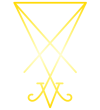The Egyptian hieroglyph for "air" and "wind" bears a striking resemblance to one of Beelzebub’s sigils. The evolutionary connection here is evident. My point is that Beelzebub is the Prince of the Air. I find it sickening how the enemy has defamed our Gods by reducing Beelzebub to the title "Lord of the Flies." Many Jewish-authored grimoires depict grotesque fly imagery for Beelzebub, accompanied by equally monstrous portrayals of our other Gods.
Our Head God has been known by many names throughout the aeons: Zeus in the ancient Hellenic language, Indra in Hinduism, Amun or Atum in ancient Egypt, Jupiter in Roman mythology, Baal or Baal-Zebul in the Phoenician religions, Hadad or Marduk in Babylon, Perun in Slavic traditions, Thor in ancient Norse mythology, Beli Mawr in the Celtic pantheon, Dyeus Pater in the postulated Indo-Aryan proto-language, as well as Shango or Nzazi in African traditions, Tlaloc or Viracocha among the Native Americans, Shangdi and the Jade Emperor in Chinese religion, and Raijin in Shintoism. In contrast, the Abrahamic religions refer to our Head God as “Satan,” “Beelzebul,” “Lucifer,” and “the Devil.”
Beelzebub is also known as Baalzebub, Enlil, Bel, Pir Bub, Baal Zebul, and Beelzebuth.
He is also identified with the Goetic demon Bael, the ancient Greek God Zeus, the Norse God Thor, the
Hindu deity Indra, the Baltic God Perkūnas, and Great Bel in ancient Britain.
- Zodiac Position: 0-4 Degrees of Aries
- March 21st-25th *[March 21-30]
- Tarot Card: 2 of Rods [From Azazel]
- Candle color: Black
- Plant: Fern
- Planet: Sun [From Azazel]
- Metal: Iron [As a God of War*], Gold [Color of Spiritual Alchemy**]
- Element: Fire
- Rank: King, one of the Rulers of Hell
- Bael is a Demon/God of the day.
- Numbers of Importance: 40, 50, 60 [From Him personally]**
Those who are close to Beelzebub know that he is Enlil: this comes from him directly. Enlil was the original "Bel," which later evolved into "Baal." Baal means "Lord" or "Master." Beelzebub/Enlil was a highly revered and well-known God, with numerous cities across the Middle East bearing the prefix "Baal" in his honor.
“Baal Zebub, the Healing God of Ekron, later became one word, Beelzebub, which came to represent evil and idolatry in the New Testament of the Bible.”
—Excerpt from "Syria" by Coleman South, 1995
Beelzebub is best known as the God of the Philistines, ruling over the city of Ekron. The ancient Philistines worshiped him under the name "Baalzebub." Beelzebub is the "Lord over all that Flies." Wherever he was worshipped, he was known as a God of weather and meteorology. He also held dominion over the airways when the Nephilim descended to Earth. The Hebrews later distorted his name to mean "Lord of the Flies" as a means of desecration.
Beelzebub maintains order within the temple and takes care of conflict and in-fighting between dedicated members. He can be very strict as He does not approve of dedicated Temple members cursing each other.
Among his many responsibilities, Beelzebub is also the Patron of the Orient (Far East). Martial arts and Asian culture have been deeply influenced by Beelzebub.
From High Priestess Maxine:
"My experience: I saw him for the first time when I asked for his assistance in creating this webpage about him. He appeared to me with platinum blond hair and darker eyebrows, wearing a white robe. This was the first time I had seen him. I had heard his voice a long time ago, and it was raspy, but when he spoke to me recently, the raspiness was gone. This is likely because he is now free."
From High Priest Hooded Cobra 666:
"The significance of the title Baal translates to King or Master. Beelzebub has always been associated with kingship, rulership, cosmic order, and supreme authority. He has been revered as a high God in most Pagan civilizations, known by different names across cultures. To the Romans, he was Jupiter; to the Greeks, he was Zeus, both sharing the eternal qualities of thunder, weather control, kingly authority, and the bestowal of power and wealth.
He is a master of spirituality, granting spiritual gifts to his followers, which in turn lead to material prosperity as a result of deeper spiritual understanding. Beelzebub has been the driving force behind some of the world’s greatest empires, both physically and spiritually advanced, as well as behind influential leaders and prominent figures who have significantly shaped human history.
He is the embodiment of authority, both worldly and cosmic. Throughout time, he has been a patron of many great and historically significant individuals, such as Alexander the Great. Beelzebub has been with us for aeons upon aeons."
Beelzebub's Sigils (click HERE for larger Sigil images):
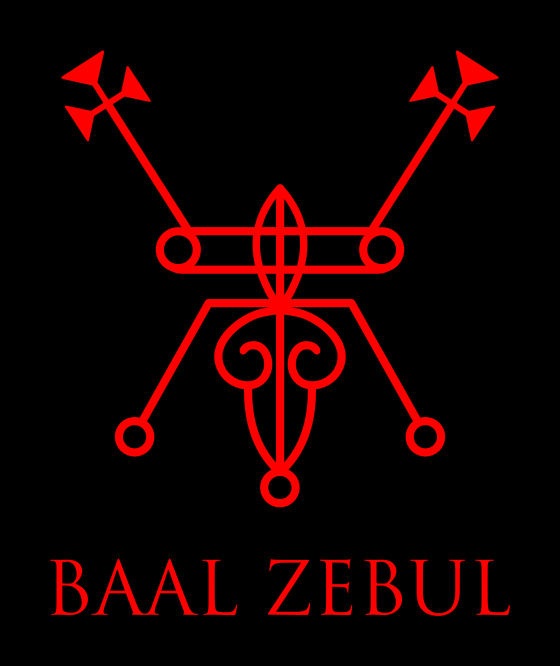
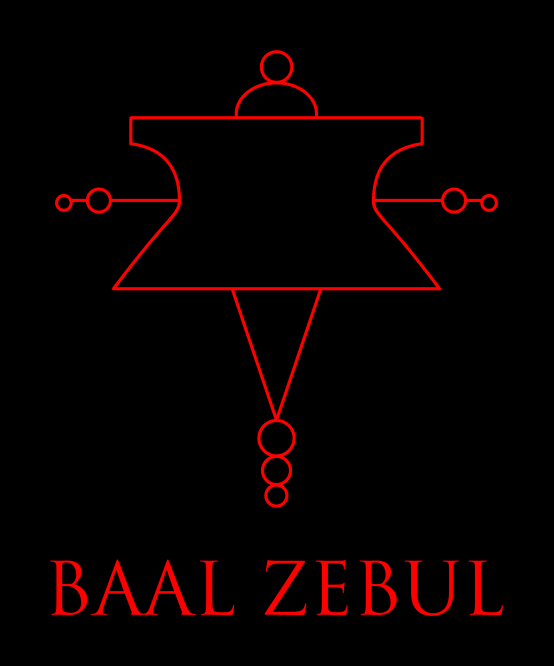
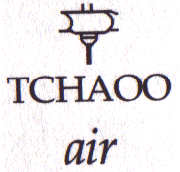
I have also noted, time and again in my studies, the glaring lack of real, substantive information about many ancient peoples, such as the Avites, whose God was Adramelech. The only trace I found was in the Judeo-Christian Bible, where the Hebrews brutally invade and commit genocide against them, just as they did to many other Gentile peoples. The ancient libraries that were razed to the ground did not just hold occult and spiritual knowledge; they preserved history. This is a blatant example of historical erasure and the deliberate replacement of truth with falsehoods.
Alongside the Jewish and Christian destruction of ancient wisdom, nearly all genuine knowledge of Beelzebub was lost. The Christians were free to blaspheme, malign, and slander the reputations of the original Gods however they pleased. With no opposition left, after the burning of cities, mass killings of "heathen" peoples, and the destruction of temples, libraries, and sacred records, subsequent generations had no sources of knowledge about these Gods beyond the distorted accounts found in the Judeo-Christian Bible.
Beelzebub, also known as Enlil, was the Patron God of Nippur, a prominent city in Sumeria, located in what is now modern-day Iraq.
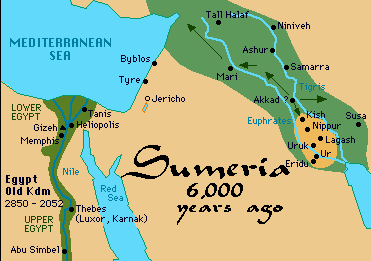
Beelzebub had his ziggurats, shrines, and temples located in his sacred city of Nippur. Below are photographs of the remaining ruins of his temple. The fortress structure atop the mound was constructed by American excavators in the 1890s "to protect themselves from the local tribes." Beneath it lies the Great Ziggurat of Nippur and the Temple of Enlil.
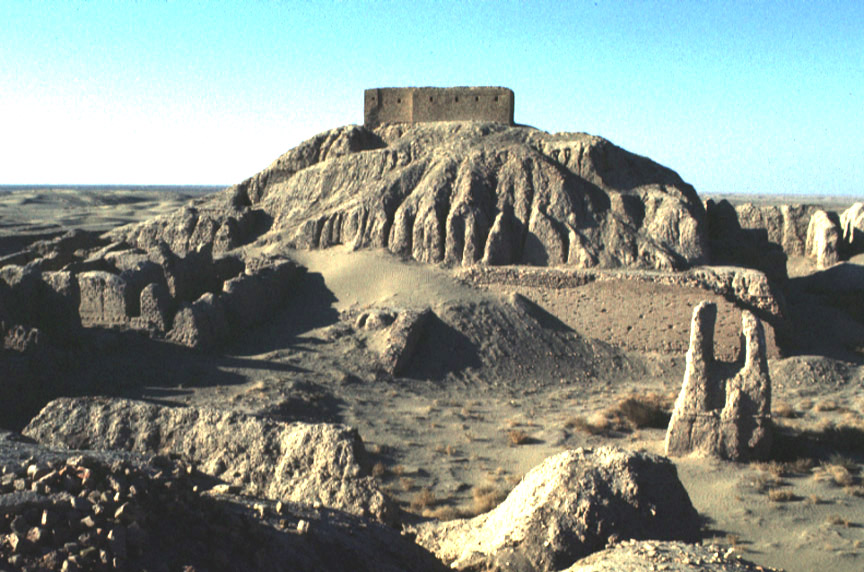
Beelzebub, also known as Enlil, is the God of storms, atmospheric conditions, wind, rain, and the element of air. He is also the God of Entomancy, a form of divination through interpreting the
behavior of insects. Additionally, Beelzebub is a Master of Astrology and the Zodiac.
His sacred number is 50.
His ziggurat in Nippur was called Fi-irn-bar-sag. Beelzebub is regarded as a gracious, life-giving, and life-sustaining deity, caretaker of his people, the beasts of the field, the birds of the sky, and the fishes of the sea. "Enlil [Beelzebub] is both a God of war and God of peace; a destroyer and protector, defender, restorer, upbuilder; inimical, hostile and most gracious."1
To receive his blessings, one must cultivate a right relationship with him.
"Enlil [Beelzebub] neither fears nor stands in dread of an enemy. A battle undertaken by him is pursued with unrelenting vigor until victory is achieved. He offers neither pardon nor
retreat:
The hostile, unsubmissive land; from that land your heart does not turn.
Once his anger is aroused, there is no one who can persuade him to leave or calm him."
2
Enlil/Beelzebub was a protector and life-giver. "As fierce and destructive as Enlil may be in dealing with enemies, he is equally gracious, kind, and loving toward his own people and homeland. He shields his people from hostile forces by surrounding them with high protective walls or becoming for them a fortress, securing the gates and bolts so that invading armies can neither climb over nor break through."
"If his people are in need of rain, he opens the gates of heaven, unfastens the bars, loosens the locks, and removes the bolts so that abundant rains may water their fields. Likewise, he may do the same to drown and utterly destroy the enemy."
Below is an Ancient Sumerian hymn to Enlil/Beelzebub:3
The gate[s] of heaven
The bars of heaven
The fastenings of heaven
The bolts of heaven
Thou openest
Thou pullest back
Thou loosenest
Thou removest
"He sustains the life of both man and beast. In doing so, he does not neglect even the smallest or most insignificant. ‘Thou art the one who causes the grain to sprout.’"
The ancient Babylonians were in awe of Enlil’s loving-kindness, protection, and support, often praising him with the exclamation: “He who protects [gives support].”
He is endowed with extraordinary power and authority. The emblem of his dominion is a radiant scepter, which he holds or wields in his hands. This luminous scepter is not only a symbol of his power, authority, and might; it also serves as a stylus in the hand of Beelzebub the Scribe, through which he enacts both his will and the will of the Gods.
“The twelve signs of the zodiac, the year, the seasons, the months, and the signs of the heavens all have their beginnings and endings, their boundaries and outlines, their images and
configurations: Enlil [Beelzebub] defines and proclaims them. Each holds a unique meaning and purpose: Enlil [Beelzebub] interprets and reveals their significance. This he does through the
‘fullness of his manifestations.’ ‘Enlil and His Seven Manifestations.’ It is one of the most remarkable attributes of any deity who has played the role of the ‘Son’ within a given trinity:
such a God was believed to possess ‘seven manifestations’ of power. The number seven was seen as symbolic of ‘fullness, completeness, and totality.’”4
*These are the
chakras
Below is a diagram of Beelzebub’s temple at Ekron in ancient Philistia:
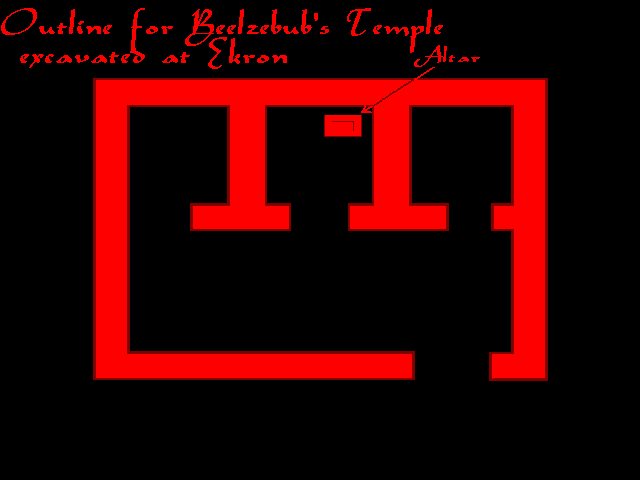
Beelzebub was also known as "Pir Bub" to the Yezidi, often referred to as “Devil Worshippers” in Iraq. They claimed he was the God of King Ahab.
[Reference: Devil Worship, 1919, by Isya
Joseph, page 40.]
The following excerpt is taken from Encyclopaedia Biblica: A Critical Dictionary of the Literary, Political, and Religious History, the Archaeology, Geography, and Natural History of the Bible, Volume I: A–D, by The Rev. T.K. Cheyne, M.A., D.D., and J. Sutherland Black, M.A., LL.D. (New York: The Macmillan Company; London: Adam and Charles Black, 1899).
BAALZEBUB, taking Zebub or Myla as the name Fly-God, a God of Ekron, whose oracle was consulted by Ahaziah, King of Israel, in his last illness. The name is commonly explained as “Lord of Flies.” True, there is no Semitic analogy for this, but Pausanias tells us of a God who drove away dangerous swarms of flies from Olympia, and Clement of Alexandria attests the cult of the same God in Elis. We may, if we will, interpret the title as “a God who sends as well as removes a plague of flies.” Let us, however, look farther.
Bezold thought that in an Assyrian inscription of the 12th century B.C.E., “Baal-Zabnbi” was the name of the one of Zebub. Baal-Zebub was a widely known divine name, adopted for the God of Ekron. The restoration of the final syllable, however, is admittedly quite uncertain, and the reading Baal-Sapuna (see BAAL-ZEPHON, I) seems much more probable. Winckler, therefore, suggests that Zebub might be some very ancient name of a locality in Ekron (no longer to be explained etymologically), on the analogy of Baal-Sidon, Baal-Hermon, Baal-Lebanon. No such locality, however, is known, and Ekron [not any locality within Ekron] was the territory of the Baal.
It is, therefore, more probable that Baal-Zebub, “Lord of Flies” (which occurs only in a very late narrative, one which has a pronounced didactic tendency), is a contemptuous, uneuphonic Jewish modification of the true name, which was probably Baal-Zebul, "Lord of the High House."
This is a title such as any God with a fine temple might bear, and was probably not confined to the God of Ekron. High House would, at the same time, refer to the dwelling place of the Gods, the mountain of assembly in the far North. There is some reason to think that the Phoenicians knew of such a dwelling place. The conception is implied in the divine name Baal-Saphon, "Lord of the North" (see BAAL-ZEPHON), and in the Elegy on the King of Tyre (Ezekiel 28); and the Philistines probably knew of it.
At any rate, the late Hebrew narrator, or, if we will, an early scribe, may have resented the application of such a title as "Lord of the High House" (which suggested to him either Solomon’s Temple or the heavenly dwelling of Yahwi) to the Ekronite God, and changed it to "Lord of Flies," Baal-Zebub. This explanation throws light on three proper names: JEZEBEL, ZEBUL, and ZEBULON, "from thy [High House] of holiness and glory." The same term could be applied to the mansion of the moon in the sky.
References:
1 Sumerian Hymns and Prayers to God Nin-Ib from the Temple Library of Nippur, by Hugo Radau, Philadelphia Published by the Department of Archeology, University of Pennsylvania 1911; Page 21
2 Ibid, Page 23
3 Ibid Page 25
4 Ibid Page 27
* From lord Zeus directly to High Priest Hooded Cobra

 አማርኛ
አማርኛ العربية
العربية বাংলা
বাংলা Български
Български 中文
中文 Čeština
Čeština Dansk
Dansk Deutsch
Deutsch Eesti
Eesti Ελληνικά
Ελληνικά Español
Español Français
Français हिन्दी
हिन्दी Hrvatski
Hrvatski IsiZulu
IsiZulu Italiano
Italiano 日本語
日本語 Kiswahili
Kiswahili Magyar
Magyar Македонски
Македонски नेपाली
नेपाली Nederlands
Nederlands فارسی
فارسی Polski
Polski Português
Português Română
Română Русский
Русский Slovenščina
Slovenščina Suomi
Suomi Svenska
Svenska Tagalog
Tagalog Türkçe
Türkçe
